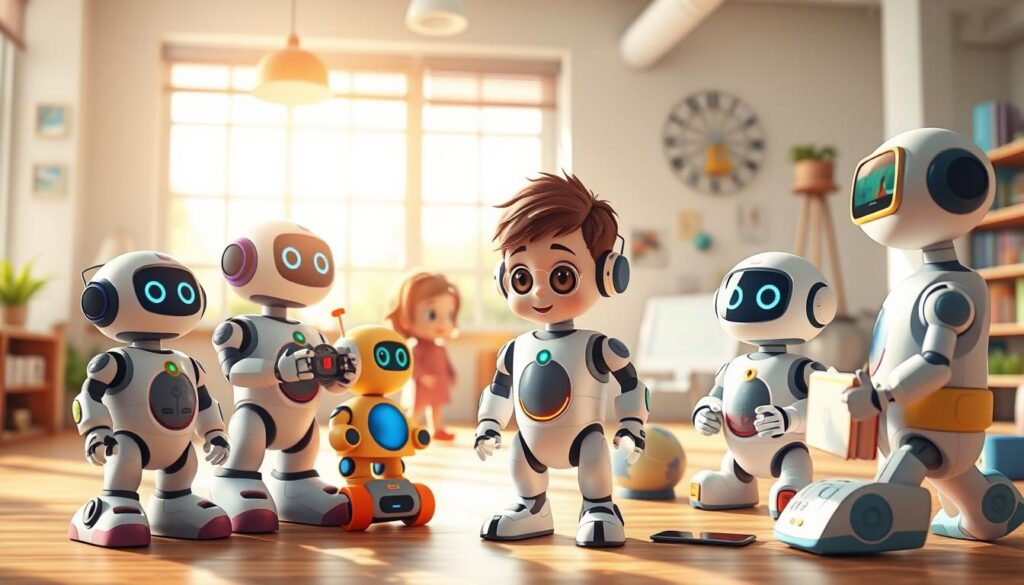You are likely familiar with the latest advancements in artificial intelligence, from virtual assistants like Siri and Alexa to self-driving cars. Now, AI-enabled toys are revolutionizing the way children learn and play.
These innovative toys combine cutting-edge technology with playful experiences, creating a new approach to learning and education. By incorporating artificial intelligence, they provide interactive learning experiences that are both entertaining and effective.
As a result, children can develop essential skills in areas like coding, language, and problem-solving, while enjoying the process of play. This blend of education and fun is redefining the way we think about learning and toys.
The Evolution of Educational Toys in the Digital Age
The educational toy landscape is changing dramatically with the advent of AI and other digital technologies. This restructuring is happening to the toy industry—an industry that has historically been related to imagination and creativity.
From Traditional to Tech-Enhanced Learning
Educational toys have undergone a remarkable transformation from simple wooden blocks and puzzles to sophisticated tech-enhanced learning tools. The traditional toy industry has embraced technological innovation, moving from passive play objects to interactive products that engage multiple senses and learning pathways.
How AI Has Transformed the Toy Industry
AI has fundamentally transformed the toy manufacturing process, from design and prototyping to production and market research. This has created more sophisticated and responsive products, revolutionizing the way children interact with educational materials and introducing new possibilities for learning through play.
How Prototype Educational Toys Use AI for Kid-Friendly Innovations
With AI, prototype educational toys can now offer kid-friendly innovations that cater to individual learning needs and preferences. The integration of artificial intelligence in these toys has revolutionized the way children learn and interact with educational content.
AI-Powered Design and Development Process
The AI-powered design tools have transformed the prototype development process for educational toys. These tools enable designers to rapidly iterate and test concepts before production, creating more sophisticated prototypes that simulate how children will interact with the final product. This not only reduces development time and costs but also ensures that the toys meet the specific needs of their young users.
Creating Adaptive Learning Experiences
Modern prototype educational toys use machine learning algorithms to analyze how children engage with them, continuously improving their responses and adapting to individual learning needs. These innovative toys can create personalized learning experiences by recognizing a child’s strengths, weaknesses, and preferences, then adjusting content accordingly. This innovation ensures that children remain engaged while learning, as the toy grows with them, offering increasingly complex challenges as their skills develop.
Key Features of AI-Enabled Educational Toys
Educational toys powered by AI offer a range of innovative features that cater to the individual needs of each child, making learning more personalized and fun. These toys are designed to provide a more tailored learning experience, adapting to the unique abilities and learning styles of each child.
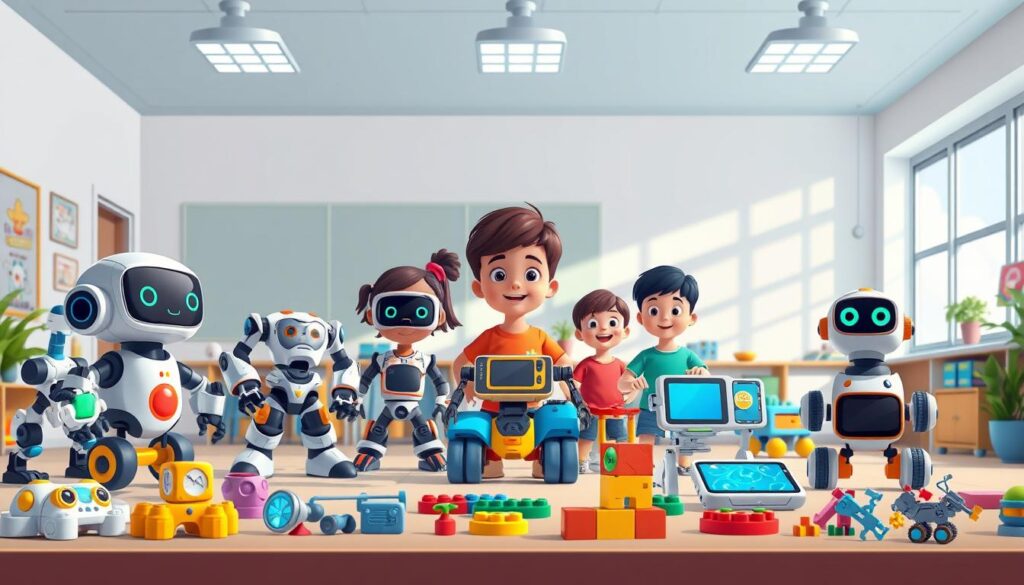
Personalization and Adaptive Learning
AI-enabled educational toys feature sophisticated personalization capabilities that adapt content difficulty based on a child’s performance. This ensures optimal learning challenges and creates customized learning pathways that respond to each child’s unique strengths, weaknesses, and learning style.
Interactive Voice and Recognition Capabilities
These toys allow children to engage through natural conversation, creating a more intuitive and engaging learning experience. Advanced recognition capabilities enable AI toys to identify objects, colors, shapes, and even emotional expressions, creating rich interactive learning opportunities.
Data-Driven Progress Tracking
Data-driven progress tracking is a key feature that allows both the toy to adapt its content and parents to monitor their child’s development in various skill areas. While collecting data, these toys must incorporate robust privacy and safety features to protect children’s information.
Top AI Educational Toys on the Market
The integration of AI in educational toys has revolutionized the way children learn and interact with complex concepts. Today, the market offers a diverse range of AI-enabled educational toys that cater to different age groups and learning needs.
Robotics and Coding Toys
Robotics and coding toys are at the forefront of innovation in STEM learning. These toys not only teach programming and robotics but also make learning fun and interactive.
Robomaster S1

The Robomaster S1 is a premier coding toy that teaches programming through Python and Scratch. It allows children to create custom programs while learning fundamental coding concepts.
MechDog
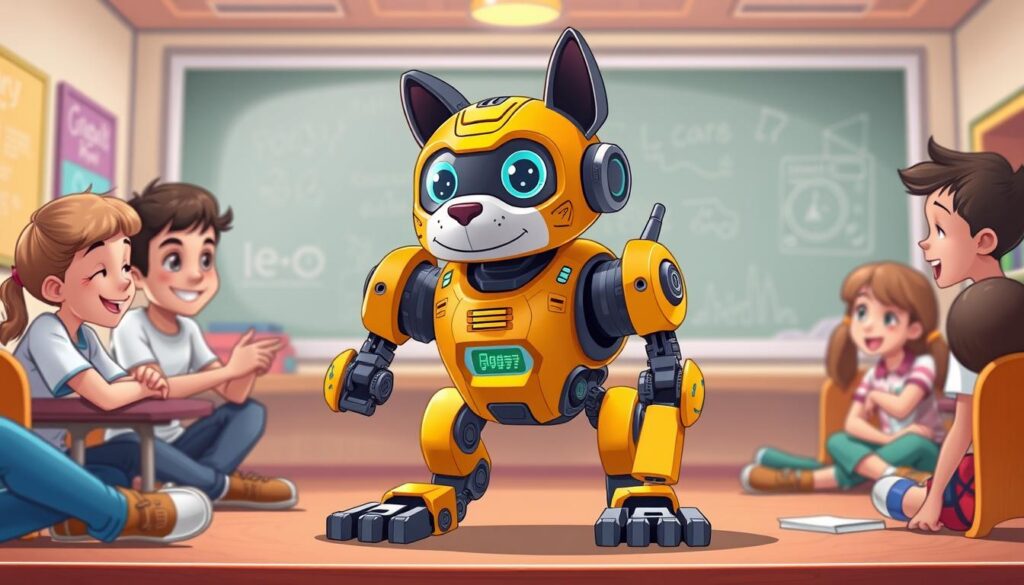
MechDog combines advanced robotics with interactive learning, enabling kids to program a four-legged robot that can perform various tasks and movements.
UnitreeGo 2
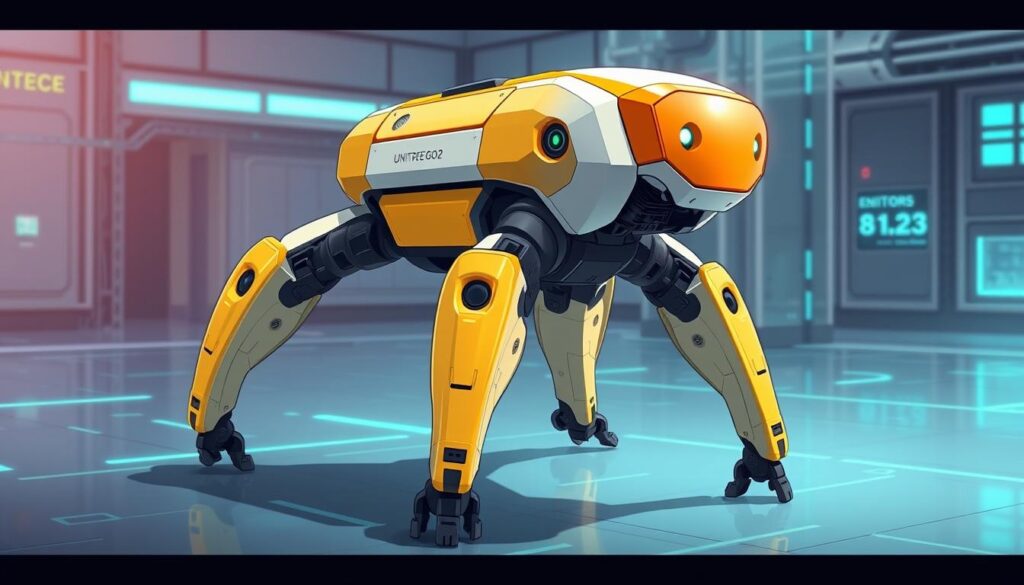
The UnitreeGo 2 is an advanced quadruped robot designed to emulate the behavior of a real pet dog, offering an engaging and interactive experience for users.
Language and Communication Toys
Language and communication toys are also benefiting from AI technology, providing personalized learning experiences for children.
Roybi Robot

The Roybi Robot is an AI-powered educational companion designed to make learning engaging and personalized for children aged 3 and above, with over 500 lessons across multiple languages.
Square Off By Miko

The Square Off chessboard is an innovative AI-powered electronic chess set that brings a modern twist to the classic game, teaching strategy and critical thinking.
These AI educational toys represent significant advancements in how children can engage with complex concepts like programming, robotics, and language learning through hands-on, interactive experiences.
Benefits of AI-Enabled Educational Toys for Child Development
The advent of AI in educational toys is providing children with a head start in their cognitive and skill development. These innovative toys are not only making learning fun but also equipping children with essential skills for the future.
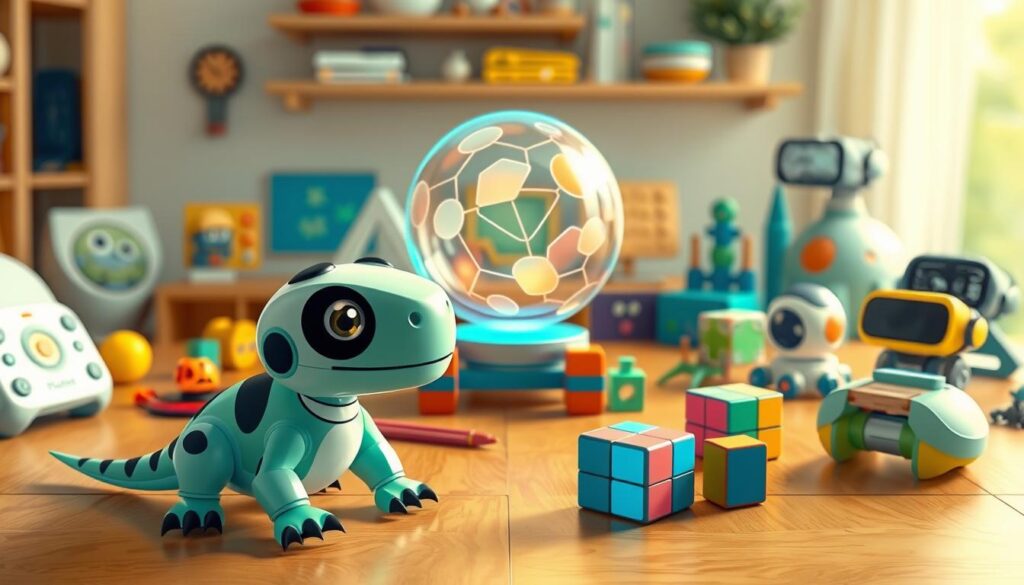
Fostering STEM Skills and Computational Thinking
AI-enabled educational toys introduce children to basic concepts in science, technology, engineering, and math (STEM) through interactive experiences. These toys foster computational thinking by teaching concepts like algorithms and logical reasoning.
Encouraging Creativity and Problem-Solving
The interactive nature of AI toys encourages creativity by allowing children to experiment and design solutions. As they work through challenges, they develop problem-solving skills and learn to approach obstacles with persistence and innovative thinking.
Preparing Children for a Tech-Driven Future
By engaging with AI-powered educational toys, children develop technological fluency essential for their future academic and career success. These toys prepare children for a tech-driven world by developing not just technical skills but also creativity and critical thinking abilities.
Addressing Concerns: Safety, Privacy, and Screen Time
As AI-enabled educational toys become increasingly popular, concerns about safety, privacy, and screen time have come to the forefront. You, as a parent, need to be aware of these issues to make informed decisions about the toys your kids interact with.
Data Collection and Privacy Considerations
Many AI educational toys collect data to enhance personalization, which raises important privacy considerations. Manufacturers must address these concerns through transparent policies and robust security measures to protect your child’s information. You should be aware of what data is being collected and how it’s used.
Balancing Technology with Traditional Play
Finding the right balance between technology-enhanced and traditional play is crucial for healthy child development. AI toys should complement, not replace, hands-on, imaginative play. This balance ensures that your kids experience a well-rounded play experience.
Age-Appropriate AI Toy Selection
When choosing AI toys, you should consider your child’s developmental stage and select products that offer age-appropriate challenges and interactions. This approach helps ensure that the toys provide significant value and support your child’s learning and development.
By being mindful of these factors, you can create a safe and beneficial environment for your kids to enjoy the benefits of AI-enabled educational toys.
Conclusion: The Future of AI in Educational Toys
The future of AI in educational toys is poised to revolutionize childhood learning. As AI technology advances, we can expect educational toys to become even more responsive to children’s unique learning styles and developmental needs.
The toy industry will continue to innovate, with market trends suggesting growing demand for products that combine entertainment value with meaningful educational experiences. Future AI toys will feature advanced natural language processing, creating hybrid learning tools that leverage both physical and digital approaches.
